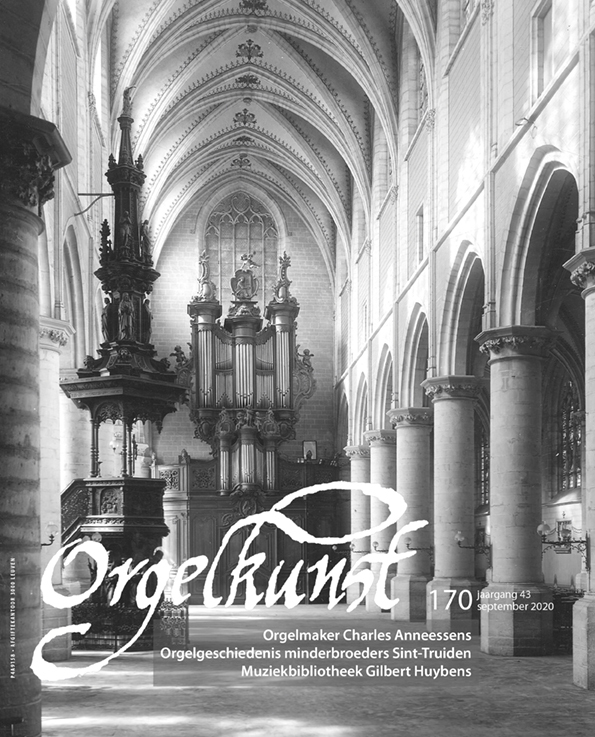
Separate issue
2020.03
€ 10
(price Belgium)
€ 16
(price Europe)
€ 18
(price outside Europe)
Etienne Delahaye: De tragische lotgevallen van orgelmaker Charles Anneessens (1835-1903)
Jos Vanderheyden: De orgelgeschiedenis van de minderbroeders in Sint-Truiden
Gilbert Huybens: Zorg om oud, nieuw en kostbaar orgelpapier (3): de muziekbibliotheek van Gilbert Huybens
Nieuwe uitgaven . Berichten . Overzicht inhoud internationale tijdschriften
